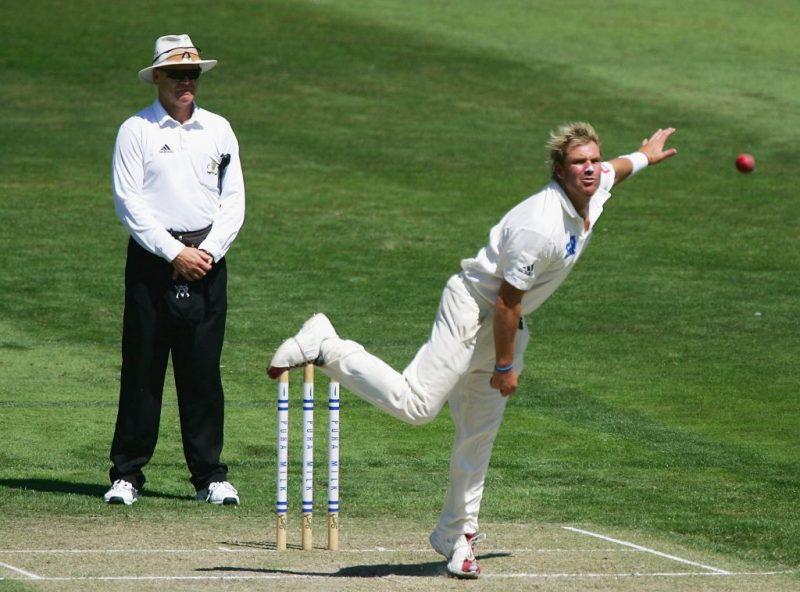
Shane Warne, Tom Moody, and Jason Gillespie have all come out with criticisms of the state of Sheffield Shield cricket in Australia.
Speaking on the Sky Sports Cricket Podcast, the three pointed out various factors for why the competition now is weaker than it used to be, though Moody was wary of looking at the past through rose-tinted spectacles.
“My observation – and it’s always challenging when you get asked this question, because people think, ah you know, you never think it’s as good as it was when you played – but I genuinely believe that the standard of it is not as strong as it used to be,” he said. “I say that because I remember in the Eighties and the Nineties the domestic competition in Australia was looked upon and admired globally as the leading domestic cricket tournament being played, and I don’t hear those conversations as often as I heard them back then.”
Moody felt one reason was that not enough Australia Test cricketers are playing in the first-class competition as they used to. “A lot of international players were playing Sheffield Shield cricket 25 years ago, where you don’t have it as often [now]. I know Justin Langer has tried to change that, he’s trying to get players to be available for more first-class cricket which I think is really important,” he said.
It was a factor echoed by Warne. “It’s pretty simple. T20 has encroached on the international player’s time. Whether that be Big Bash, IPL, whatever it may be. The international players are not playing state cricket, and if they do it might be a token game that they don’t want to play, and then it flows down, the state player doesn’t play grade cricket.”
More fundamental for all three was the weakening of the standards underneath the Sheffield Shield, with both grade cricket and second XI coming in for criticism. “I don’t think it’s as strong as what has been previously, because I’m not sure what’s happening underneath first-class cricket here in Australia is as clear and as direct a method of players to come through the system,” said Moody.
“Club cricket, the dramatic change has been the age. The average age of a club cricketer in this day and age to what it was, say, 20 years ago is quite a bit different, it’s a very young dressing room in an A-grade club side now, so therefore the learnings are nowhere near as rich as what they were previously because you don’t have the old heads in that dressing room to share stories and experiences.
“And I think society has change dramatically. At the end of the day, people spend their time differently to what they did 20 or 30 years ago. We didn’t have back then things that are available in this day and age to challenge sport on the weekend. Sport on the weekend, whether it be Aussie Rules Football in the winter or cricket in the summer, that was the priority, that was No.1 on the weekend. But now that’s back in the queue because there’s so many other things that young boys and girls are keen to do on the weekend.”
A controversial change to the rules in second XI cricket has lowered the standard of competitions above and below, in the eyes of the pundits. From the 2009/10 season onwards, state second XI teams could only field three players over the age of 23, meaning grade cricketers aspiring to move up a level beyond a certain age had fewer chances, and the players playing second XI cricket learned less from the experience.
“The guy whose in his late twenties, nudging 30, he’s lost the incentive,” said Gillespie. “A 30-year-old still harbours dreams of playing second XI cricket. That second XI match might be his Test match, and he might think, ‘I’m going to give grade cricket another season or two here because the carrot that’s being dangled, if I perform well at club cricket, I might get a second XI game, South Australia versus Victoria at the MCG, and that’s my carrot.
“‘That keeps me in grade cricket for another year, because getting that second XI cap, that’s my Test match. I’m going to strive to play my Test match.’ He can convince the wife that he’s going to stick at club cricket for another couple of years and play and work with these young guys. I just think we need to redress the balance in Australian cricket.”
 Shane Warne in first-class action in Australia
Shane Warne in first-class action in Australia
“Whoever came up with in Australia this silly rule that second XI has to be under 23s is ridiculous,” said Warne. “You don’t have the seasoned campaigner whose been around for 10 years trying to ply his trade and is right on the fringe of international cricket and who hasn’t given up hope for those younger players to get a taste of experience.
“There’s no experienced players around now because they don’t play grade cricket, they don’t play state cricket. Grade cricket and first-class cricket has to be really strong. They have to find a gap for the international players to play more state cricket. If that happens, Australian cricket will be stronger for a longer period of time. If second XI cricket isn’t just young kids all the time where they’re not learning of senior players, then Australia has a chance to be at the top of the tree for a long period of time again rather than going through cycles of being good for a couple of years, and then average of a couple of years.”
In the 2019/20 season, Cricket Australia scrapped the age restrictions in second XI cricket, and with Australia now the No.1 ranked Test side in the world again, it remains to be seen whether we are now entering a new period of Aussie dominance.








